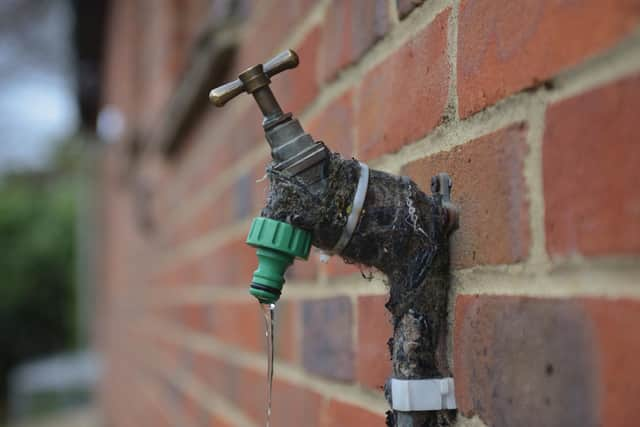Northamptonshire faces 'water scarcity, temperature rises and low rainfall' by 2043, says Anglian Water report
and live on Freeview channel 276
Anglian Water has warned that Northamptonshire faces a four-fold threat to its economy from rising temperatures, reduced rainfall, water shortages and population pressures.
The water company, that supplies water and maintains the sewerage systems, co-commissioned with Capital Economics for a report entitled ‘Thriving East’.
Advertisement
Hide AdAdvertisement
Hide AdTheir research shows water scarcity, temperature rises and low rainfall by 2043 ‘poses a significant risk to the region being able to prosper’.


To counteract the challenges Anglian Water has proposed investment of £183m in Northamptonshire between 2025 to 2030 to address the ‘pressing’ environmental and social challenges – with £9bn for the region.
Peter Simpson, chief executive officer of Anglian Water, said: “Our purpose is to bring environmental and social prosperity to the region we serve. Our region relies on water to facilitate economic growth, tourism, and to feed a significant part of the population.
“Our role is to facilitate growth and prosperity in the region through significant investment, with our most recent business plan for 2025 to 2030 - our largest ever - outlining a proposed £9bn of essential investment in the region. This plan, created in consultation with regional stakeholders, is designed to address precisely the challenges Thriving East sets out.
Advertisement
Hide AdAdvertisement
Hide Ad“But to achieve this it will require close collaboration with local authorities, businesses, community groups and regulators to unlock opportunities for generations to come. We hope that this acts as a rallying cry to help bring together everyone who shares our ambition to capitalise on the many opportunities and in delivering a prosperous, thriving future for the region.”


Challenges facing Northants are some of the most severe in the country and the East of England is the most challenged region outside of London, warns the report.
By 2043, temperatures in Northamptonshire are set to increase by more than the national average as rainfall hits record low.
In its report, Anglian Water outlines how Northamptonshire can ‘get ahead’ of these challenges with investment.
Advertisement
Hide AdAdvertisement
Hide Ad

It says: “With an estimated 11 per cent population growth by 2043, particularly of over-65s, Northamptonshire is set to face significant pressures accommodating its necessary housing and infrastructure growth.
"Northamptonshire’s natural environment is already seeing acute challenges compared to the region’s average, according to the report – and while population and housing growth could help the county’s economic prosperity, this growth will put an additional strain on the region’s water and sewerage infrastructure. Against a backdrop of hotter and drier weather, a resilient water supply will become more important than ever to Northamptonshire’s growing population.”
As part of its recently submitted business plan, Anglian Water is proposing a record £9bn of much-needed investment in its region between 2025 and 2030, including more than £183m of investment into Northamptonshire.
Proposals include:
- £8m to improve water resilience and reliability, including a new pumping station at Pitsford.
Advertisement
Hide AdAdvertisement
Hide Ad- £1.7m for a reinforcement main, to increase water pressure for properties at risk of low pressure in Daventry.
- £20.8m to improve river water quality by reducing storm overflow spills at nine sites, including Oundle, Brigstock, Titchmarsh, Broadholme and Stanion water recycling centres and pumping stations at Aldwincle, Lowick, Denford and Islip improving storm water storage, sustainable drainage systems and surface water management
- £4.1m to lay 6.5km of large diameter water mains in Wellingborough
- £20.7m to measure, manage and reduce emissions of nitrous oxide at Great Billing Water Recycling Centre
Anglian Water’s plans are subject to approval by Ofwat, the water industry’s financial regulator.
